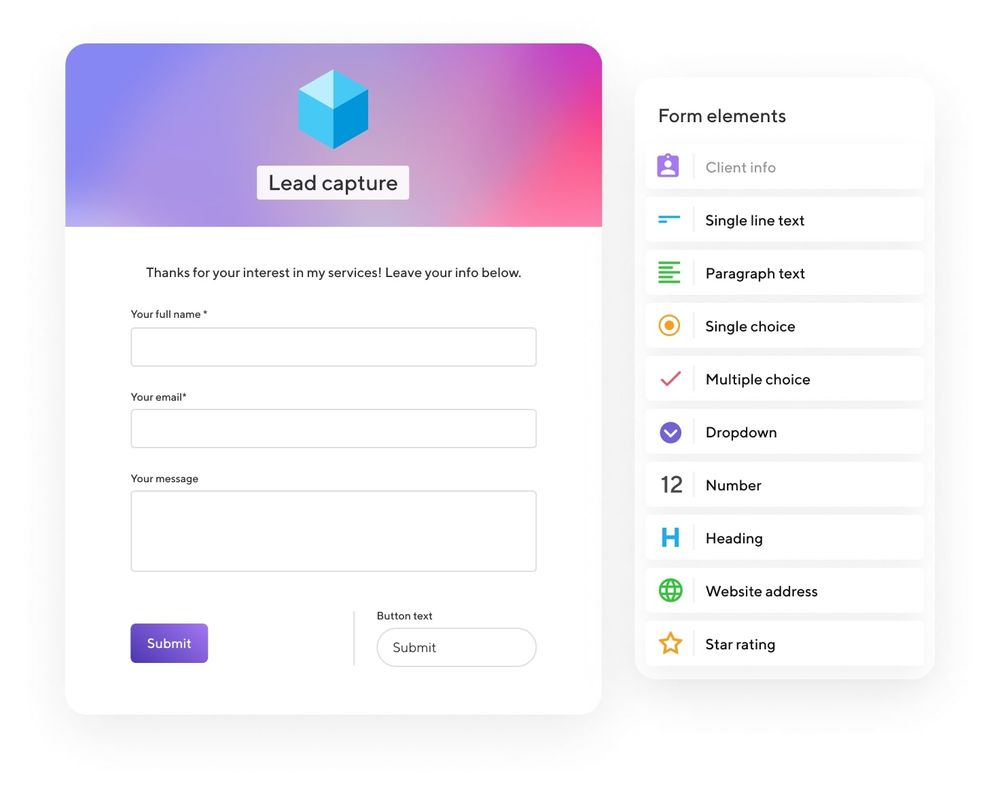Working as a freelancer involves much more than simply the craft or skill you offer to clients. A successful freelance career includes many aspects outside of the work itself, including networking, proposals, self-marketing campaigns, negotiations, planning, and more. A freelancer is, in fact, a multi-faceted and multi-skilled worker with their hand in many honey pots at any one given time.
But before we break down the components of an effective creative brief, it’s important to know what purpose it serves.
Why do freelancers need a creative brief?
Often, you are convincing potential clients and stakeholders that they should pay you and invest in you. You are demonstrating that your work is worth it for them and will help them achieve certain goals and expectations. This means that, as a freelancer, you will often be involved in processes of stakeholder negotiations, project planning sessions, proposal sending, meetings, and so on.
A crucial practice of both stakeholder negotiations and project planning is writing creative briefs.
Creative briefs are critical to freelancers in many different trades, and it is vital that you know what they are, why they are used, and how to create them successfully if you want to succeed in the tricky freelance world. If you aren't currently using creative briefs or you don't know how to create the best one possible, you are missing out on a very valuable tool and profitable opportunity.
With that in mind, this blog is going to help you on that journey. We are going to answer all of your creative brief questions and help you start your own first brief.
Let's get started by pinning down a definition of the term.
What is a creative brief?
A creative brief is typically used in creative, design, and marketing campaigns and projects. However, it is a tool suitable for a wide range of freelancers and industries. It is a document that outlines the approaches and deliverables for a project, i.e., what is going to be produced and why, which is then presented to a client, stakeholder, or wider creative team.
Creative briefs are more commonly used in large and long-term projects, and they are often used to secure funding and/or approval from clients and stakeholders.
All creative briefs should focus on answering specific goals and questions within any project or campaign. For example, how will any work produced increase traffic to the client's website? Will the visuals match the client's vision? Will the ads generate enough revenue to be cost-effective?
The process is essentially that of documentation of how you and/or your creative team are going to deliver a project or campaign in an actionable, measurable, and achievable way. It sets out your goals and intentions before you begin and gives the other side of the equation a visual image of how the project will progress.
It is a very valuable tool for freelancers. It cements your upcoming process and locks in the approval of others involved.
There are different components that should be included in a creative brief in order for it to match its purpose. We will outline those in the following section. Including these components will help you build a creative brief that will impress and reassure those around you in any project.
The components of a creative brief
There are certain components that should be included in a creative brief, including but not limited to:
Target audience
If you are launching a product, service, or campaign for a client, establishing the target audience is an essential process in this. You need to know to whom you are directing all of your content and efforts. If you don't, it is much more likely that you can put hundreds of hours into an unsuccessful project.
When considering the target audience, you need to think about:
Behaviors - How does the target audience make purchases? How do they navigate sites? What social media platforms do they use? How are they likely to react to what you are proposing?
Location - It always helps to show a client that you are aware of locational and geographical factors in any project. Cultural attitudes, regulations, and even legal matters need to be addressed before any work begins.
The company's background and project's purpose
Say you are creating a new site for a client with a strong focus on UX design. In your creative brief, you will need to outline why you would be doing this for this company at this specific time. What does launching the new site at this time mean for that company, and how does it fit into its history?
Every piece of work sits within a wider context, especially when it is for an established company or client. Make sure you outline specifically what purpose your project, product, or service has, and what it will mean to the people for whom it is being developed.

The project goals and the desired outcome
All projects need to have goals and desired outcomes. These goals and outcomes need to be agreed upon between the freelancer and the client. A creative brief is a great tool to ensure that these goals and outcomes are indeed aligned between the two.
If you aren't on the same page as your client from the get-go, it can make the life cycle of the project very tricky and confusing as time passes. It can also easily lead to client disappointment. Use your creative brief to get everyone in the same mindset right from the start and work on the same goals throughout the project. That is the best path to success.
Key messages
Every project conveys key messages to consumers and audiences. Sometimes your client's vision may contain key messages that they don't explicitly outline, and then they are subsequently disappointed when these messages aren't clearly outlined. An effective creative brief outlines the exact key messages that the project should endorse and include.
Key messages of a project can usually be summarized by asking the question, "why?" If you are launching a new site, why? If you are creating something new for your customers, why? What does it mean, and what is it saying? That's what you need to get across in a good creative brief.
The competitive landscape
All effective creative briefs include an acknowledgment of competitors. To have a deep understanding of the gap in the market your project or product fills, you need to be astutely aware of the competition around you. How can you learn from their mistakes and profit from their successes? Also, how can you stand out from the crowd with a unique creative approach?
When you are a freelancer, you are particularly trying to stand out from the crowd as you are trying to gain work and contracts over other freelancers and contractors. To do so, you need a solid creative brief with examples of how you can take this project to success.
Brand voice and attitude
When you are creating anything for a client or company, it is critical that you consider brand voice and attitude. Projects such as a new site or a marketing campaign often fail because the project doesn't match the company's tone, voice, and attitude. When this happens, the new content can easily fall flat and become obsolete.
It's like when you watch an advert on TV from start to finish and can't think of what company or product it might be for. If things don't match up, it will be much harder to achieve the goals and desired outcomes for a project. Therefore, setting out exactly how you will match the brand's voice and attitude in a creative brief is a critical practice.
KPIs
KPI stands for key performance indicator. KPIs help us measure progress and determine how things are going throughout a project. Outlining what KPIs will be used for your project with a client will demonstrate to them how they can determine whether their expectations and goals are being achieved and, if not, what to do about that. This can be very reassuring for clients and can add an extra layer of trust to any project.
Any client will want progress updates and status reports throughout a project. If they know that they won't have to go looking for these and that they will be freely handed over, this will certainly go in your favor.
There may be additional components that you would like to add to your creative brief, depending on each individual project and client. There may also be one or two components mentioned here that you don't think will be relevant to your own creative brief, and that is ok too.
The most important thing is that the creative brief is tailored to what you can provide for a client and how exactly you are going to do that. Match those aspects up to client needs and expectations, and you will be onto a winner.
If you are struggling with writing a creative brief, one of the best ways to go about it is to use a creative brief template. We will talk more about those and where you can find them in later sections of this blog.
Why are creative briefs important?
A creative brief can be the thing that stands between your vision and a project being undertaken and sponsored/paid for. To really secure a project, especially a large project with an even larger price tag, you need to show investors and clients why your idea is worth their time and money.
It can be easy to talk the talk but not walk the walk, and that is why many clients and investors will want to see fully documented proof of how you are going to carry out the project and why it will work in the way they want it to.
If a project doesn't appropriately consider all of the aspects in the above section, including target audience, brand voice, purpose, landscape, and so on, a client or stakeholder won't be convinced that the money they are forking out is worth it or will get them the end-result they want.
A creative brief is essentially a piece of persuasive documentation that helps both you and the clients/stakeholders know exactly where a project is going and what method of transportation it is using for that journey. If you get it wrong or don't include one at all, it could cost you a lot of potential work and income. For any freelancer, this is quite a disaster.
As we said at the beginning of this article, being a successful freelancer isn't just about the skill you have. It is also about how you market and present yourself. If you can't convince other people that your work is top-quality, you won't get the steady flow of work that you need to survive in the market.
Nail the creative briefs, and watch your success flourish.
What is the best way to create a creative brief?
Now that you know you need a creative brief, your next question is probably to do with how to go about creating the brief itself.
People create briefs in lots of different ways. If you are working on a creative project, you will probably want a very visual and aesthetically-pleasing creative brief. If you are someone who works in a very minimalistic and simple way, you may want your creative brief to follow the same system of design.
The easiest and quickest way to create the right kind of document is to use a creative brief template. Following a template and using creative brief examples designed specifically for freelancers means that you know you are on the right track. Now that you know how important creative briefs are and why they are so vital to your project's success, it goes without saying that you want to get the process of creation right.
Luckily, there are products and tools out there that can help you in this process and provide the right creative brief template for you.
Indy—a freelancer's best friend
Indy is a multi-purpose freelancer tool that helps you with everything you need to be successful in your freelance career. There are many different functions and purposes of the service, including invoicing, time-tracking, and proposal management.
There is also the Forms tool, which can help you build the perfect creative brief.
With Indy's Forms tool, you can create a brief by choosing your template, adding elements, and customizing the contents how you want them. You can then share the form and collect all responses and comments directly in one space.
Having everything you need to create the perfect creative brief, share it, and gather feedback in one accessible and efficient tool is the best way for all freelancers to manage the creative process. It keeps everything cohesive and collaborative, which both you and your clients will greatly appreciate.
If you want to get on the right path and start the process of creating your own creative brief, you can start by signing up for Indy and trying the Forms tool for yourself. Get started today for free!



